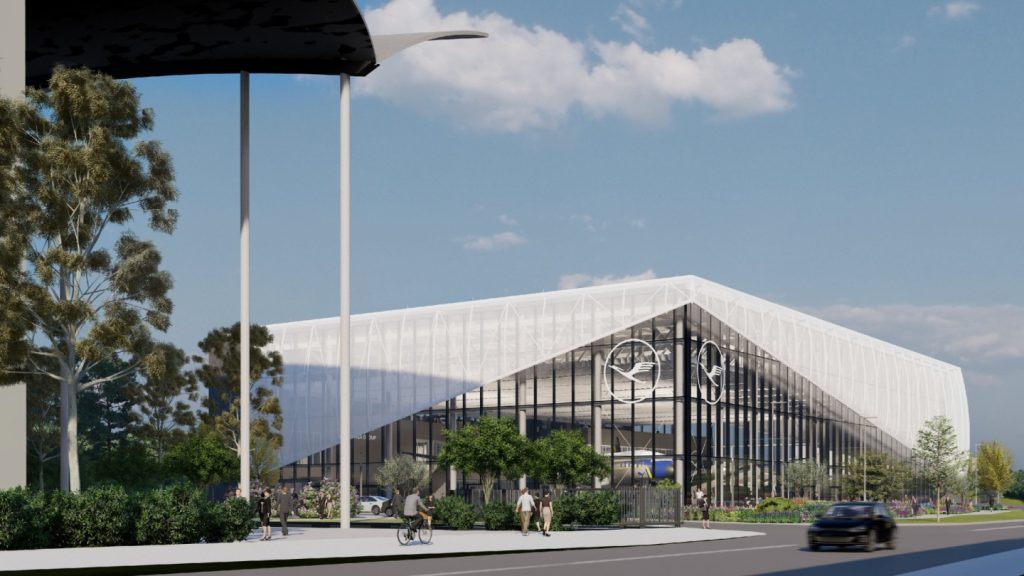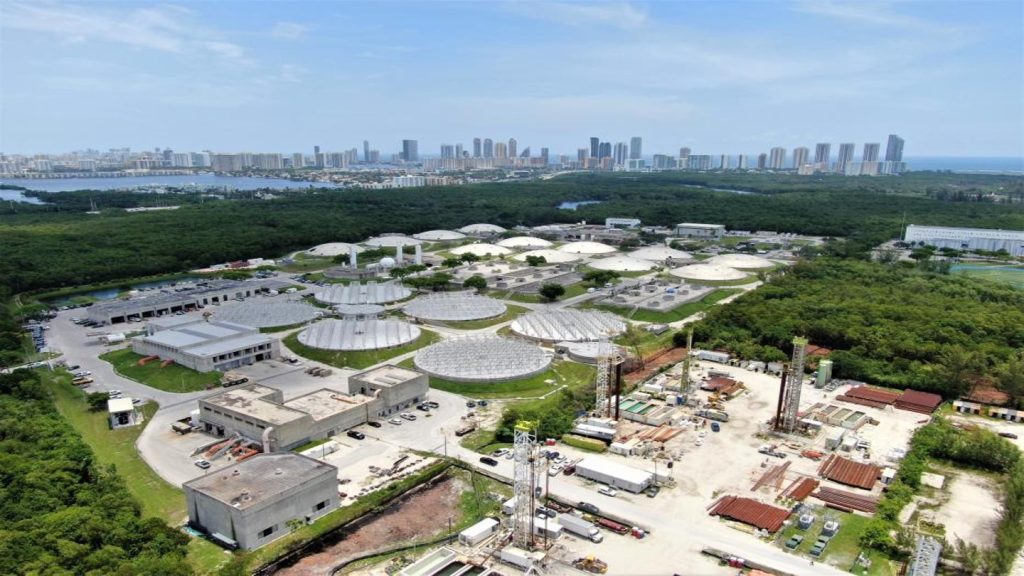"Airports are ugly," Douglas Adams once observed. "Some are very ugly. Some attain a degree of ugliness that can only be the result of a special effort."
The UK humorist made a valid point. At the time of committing that thought to paper in the late 1980s, it did seem that functionality had all too often come at the expense of aesthetics. One needed only visit either of Europe’s two busiest hubs, Heathrow and Charles de Gaulle, to appreciate how an increased volume in air travel and passenger numbers over the preceding decades had forced operators into bolt-ons and expansion programmes with little or no architectural merit.
Fast forward 20 years or so, however, and the situation is somewhat different. From Beijing to Bogota, airports are now prestige projects and, perhaps more importantly, those charged with commissioning them are looking for something that transcends function to make a far grander statement.
The aspirational airport
"For a long time architects overlooked the airport as an aspirational building type," believes Curtis Fentress. "What we saw going up in the ’50s and ’60s were more like warehouses or supermarkets than great transportation terminals. Low ceilings, dingily lit holding areas, fittings not dissimilar to those found in a grocery store – they were not interesting spaces."
The US architect, who laughingly refers to Heathrow as ‘the Monty Python maze’, was in the vanguard of a generation that sought to look afresh at what an airport should achieve and signify. Despite going on to design a portfolio of award-winning facilities, including Seoul’s Incheon International, regularly voted the world’s best, he is perhaps still best known for his first airport project, Denver International (DIA). In his eyes, this was a game changer, revolutionising the way the world looks at airports and the cities that build them.
See Also:
"The ’60s and ’70s were still all about function and efficiency and that led to the designs we saw for terminals such as Atlanta and Dallas Fort Worth," he explains. "The idea of creating an ‘icon’ was something we really pushed with DIA and the fact that it has become so synonymous with the city and region is testament to how successful such an approach can be."
How well do you really know your competitors?
Access the most comprehensive Company Profiles on the market, powered by GlobalData. Save hours of research. Gain competitive edge.

Thank you!
Your download email will arrive shortly
Not ready to buy yet? Download a free sample
We are confident about the unique quality of our Company Profiles. However, we want you to make the most beneficial decision for your business, so we offer a free sample that you can download by submitting the below form
By GlobalDataThink bigger
Santiago Calatrava is a man who is also well versed in the potency of icon. The Spaniard has created aspirational architectural landmarks for cities as far flung as Dublin, Buenos Aires, Toronto and Salford. He has also been charged with overseeing the next phase in DIA’s evolution, designing a rail station, hotel and two bridges as part of the redevelopment of the south terminal.
Uncertain as to whether or not one can claim aspirational airport design as a modern phenomenon – he cites Eero Saarinen’s TWA terminal at JFK and Dulles Airport, constructed in 1962 and 1958 respectively, as ‘moving, beautiful achievements’ – a shift in scale over the past two decades has, however, led to practices and operators thinking bigger.
"The opportunity is there to make a real statement," he says. "These facilities often sit in isolation; viewed from afar as well as by those passing through their halls. That presents the potential to create a genuine landmark. The idea of moving people through the airport, creating and connecting spaces of quality – it is a wonderful chance to really make an impression."
Keep it in context
A common criticism of statement architecture is that the iconic all too often comes at the expense of locale. Calatrava is not exempt. He has repeatedly been accused of creating ‘one-liners’, erecting interchangeable buildings and structures that contain no reference points to cultural context or local heritage.
"Landmarks are formed through either specifically capturing the places in which they sit or through using the vocabulary of special, unique structures," he argues. "Is there a right way? Airports have international links, people passing through from all parts of the globe. An international style should, therefore, be acceptable, so long as that style is genuinely special."
Fentress appears less sure. DIA’s 15-acre Teflon-coated tensile fabric is certainly striking, but the effect is heightened through its evocation of the Rockies’ peaks visible in the distance, and the subtle homage to the region’s Native American heritage. "I spend a lot of time getting to know the area in which I’ll be working, its culture, people and history," he reveals. "Context is vital. For Raleigh-Durham International (RDU) in North Carolina, for example, there is a legacy of craftsmanship, of people using their hands, working with the region’s hardwoods. But there are also three major universities in the area; it’s a research triangle underpinned by a huge amount of brainpower, themes I wanted to embody in the final design."
The two strands of artisanship and high-tech pioneering were fused within Terminal 2 at RDU, through the use of a lenticular wood truss structure supporting the roof. However, even when the architect enters cultures that are perhaps less immediately familiar to his North Carolinian roots, his ambition is to create something instantly recognisable to those for whom he is building while still striving for an elusive ‘uniqueness’.
"Airports should never be about the architect; they must focus on the people and the place," says Fentress. "Yes, be memorable, but evoke more than just the memory of the building itself, call to mind the city, region or country where it stands."
But the relationship between airport and city can be somewhat disjointed. Those facilities that lie in the heart of a metropolis are often resented due to the noise and traffic created, while operators become frustrated by the inflexibility and constraints that a neighbouring community may bring. Meanwhile, airports that sit outside the city limits may be less restricted when it comes to growth, but isolation makes it that much harder to become part of the wider area or forge a distinct identity.
The airport as a destination
The idea of an ‘airport city’ clearly excites Calatrava. He defines his work with DIA, almost 40km from downtown, as ‘bringing the city closer to the airport’ and the new rail system certainly goes some way towards making this a reality. However, successful realisation of this goal goes beyond transport links and requires the facility to become more than merely a gateway.
When pressed for examples of airports that have already gone some way towards achieving this, Calatrava cites Zürich and Munich. With offices in the former, it is a place he knows well, and the Spanish architect has been struck by the way in which the facility is used by the city as a whole.
"Local people travel there at weekends – it’s only ten minutes from the main station by train – because the shops are open, it has good restaurants, families like to see the aircraft and real efforts have been made to reach out beyond air passengers," he explains.
"Munich is further from the city centre, but when you emerge from that airport it feels as though you are in an actual place. There are plazas, gardens, regular events, a great upmarket hotel and a real feeling of life and an ambience that one doesn’t get in many airports. Locals travel there specifically to take advantage of the amenities."
One should not underestimate the importance of design in making this vision a reality. While functionality must never be overlooked, the airport architect must consider themes such as the humanisation of mega scale, previously restricted to ambitious urban projects, creating spaces and flows more akin to mini cities.
Fentress’s undertaking at LAX, the $1.545bn Bradley West project, is perhaps his greatest challenge yet. Having not undergone any significant infrastructural upgrades since the 1984 Olympics, it has become reluctantly used to wearing the unwelcome moniker of ‘the US’s worst airport’. Fentress has sought to transform this state of affairs by involving the local community, asking for input as to what a transformed facility should embody. The result can be seen in the proposed wave-like roof forms that evoke the airport’s Pacific setting and through plans to incorporate elements of media and retail unique to the city.
That it has taken this long to set LAX back on track is testament to the legacy of problems architects and operators face in bringing existing infrastructures up to speed.
"Based on the huge changes in air travel of the last 50 years, I think we now acknowledge a far greater need for flexibility in the structures we’re creating," says Fentress. "You need to be able to accommodate the next generation of changes."
Calatrava agrees and cites his experience of designing railway stations as a direct counterpoint. "People spend so much less time in the station when travelling by rail so when frequency increases, managing the rise in passengers is less of an issue," he begins. "Airports are quite different. The same process requires continuous expansion both inside and in front of the facility. In the space of a decade you can see a terminal virtually require duplication."
But even the best intentions do not always suffice. Calatrava received criticism from the Spanish airport authorities for his main terminal at Sondica Airport, Bilbao, when it started to near capacity in 2007. He rejects such accusations out of hand and blames the authorities themselves for any issues regarding overuse.
"This was initially perceived as a huge international airport, but it was a political decision to create something smaller," he counters. "From the very start the scope was there to extend the facility on both sides and double, even triple capacity. It was built into the master plan. Those designs can still be realised, but the problem is one of money and the fact that the public funds simply aren’t there."
He also points to a similar situation at Lyons Airport, where Calatrava designed a characteristically iconic railway station in the mid 1990s. That too had aspirations to be an international hub for the region, only for the French authorities to consolidate operations at Charles de Gaulle at its expense.
"In the end, we are all slaves to politics," the architect laughs. At least that is a sentiment Douglas Adams would still recognise.







